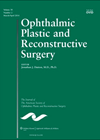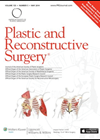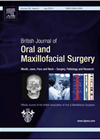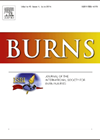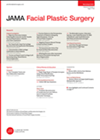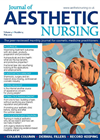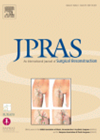
Journal Reviews archive for 2015
Repeated orbital decompression surgery
This is a retrospective review of nine redo orbital decompressions in six patients. All operations were performed for dysthyroid optic neuropathy, both initially and when repeated. The interval between first and redo decompressions varied from one to 15 years and...
Facial sensory rehabilitation
The authors of this paper show the results of their method for facial sensory rehabilitation using cross-face sural nerve grafts in three patients. All three patients had hemifacial anaesthesia after trauma or intracranial tumour resections and their symptoms varied from...
Two for the price of one multiple parotid neoplasms
With advancing years come many benefits, but one drawback is the acquisition of parotid (or thyroid) neoplasms. Conventional teaching is that most are benign and slowly enlarge, and not infrequently are found bilaterally as in Warthin’s. Pleomorphic adenomas are also...
Factors which predict the utilisation of plastic dressing clinics in paediatric burns
This paper seeks to identify which factors impact on the re-attendance rates at a paediatric outpatient service following a burn. A retrospective review of patients admitted to a single paediatric burns unit (Royal Hospital for Sick Children, Edinburgh) over a...
Burns debridement: VersajetTM vs. conventional debridement
A prospective randomised controlled trial was undertaken to compare conventional tangential burn wound debridement against the use of Versajet™ hydrosurgery in the treatment of partial thickness paediatric burns. Seventy-five children under the age of 16 were recruited for the study...
Management of the thick skinned nose
The authors briefly present a surgical pearl that helps addressing the overly thick nasal skin envelope in cosmetic rhinoplasty. In order to optimise cosmetic results in thick-skinned noses, contour enhancement is best achieved by elongating and projecting the skeletal framework...
Skin grafts vs local flaps in reconstruction of nasal defects
Nasal defects commonly are a result of removal of skin lesions. Cosmetic outcomes of local flap reconstructions are commonly accepted to be superior in comparison to skin grafts. However, local flap reconstructions require more adjunctive procedures than single-stage operations based...
Maximising treatment outcomes with skin peels
The author provides a comprehensive overview of skin peels as one of the main treatment options for the improvement of photodamage, hyperpigmentation and mild acne, whilst reinforcing that aesthetic practitioners have a responsibility to inform patients of all the available...
Nutraceuticals and skin health
An interesting discussion on the evidence surrounding nutraceuticals. The author describes nutracosmetics to be one of the fastest growing subsections of the nutraceutical industry. A comprehensive analysis of topical and dietary antioxidant protection is conveyed with conclusive evidence to demonstrate...
ERAS in microvascular breast reconstruction
Enhanced recovery after surgery (ERAS) is an important concept in today’s accountancy dominated hospitals, effectively decreasing the length of stay (LOS) of postoperative patients. This is something that surgeons will have to consider – or have protocols foisted upon them...
Ointment related granulomas post-blepharoplasty
This is a retrospective review of eight patients who developed granulomatous masses after lower lid blepharoplasty. All patients had sutureless bilateral trans-conjunctival surgery, and lubricating ointment was instilled into the inferior fornix postoperatively for two days. Painless lower lid masses...
Biodegradable plates in lateral orbitotomy surgery
This is a description of a new method for fixating the bone flap during a lateral orbitotomy. The technique involves the use of an absorbable lactide plate. This is warmed in a water bath to allow trimming and moulding to...

